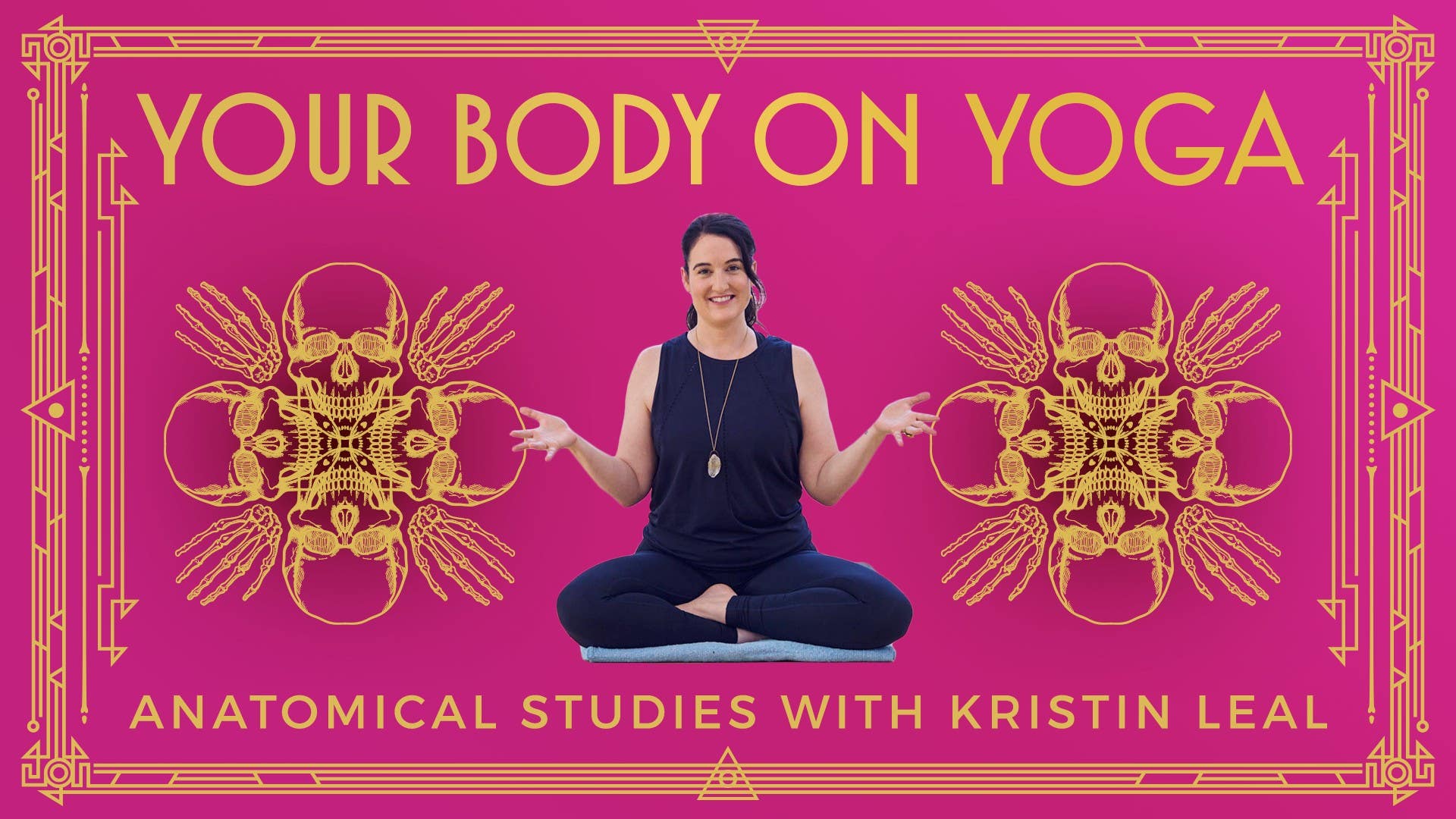Description
About This Video
Transcript
Read Full Transcript
Let's talk muscles. Now when I first started teaching anatomy, yoga anatomy, I was really really fond of trying to separate all of the 600 plus muscles in your body and give a starting point, an ending point, an origin, an insertion of each muscle and talk about their action. I even really loved those books that started to outline in a yoga posture, in this pose you're using your biceps, in this pose you're using your quadriceps. And I was really fond on that kind of organization, putting everything in its own box, learning it, checking it off a list, it's comforting. In reality, the muscles can't be separated. They play various different parts and they can move in various different ways and it's very complex but worth our time diving in at some of the glorious things that they can do. So muscles have different properties. Muscles can be excited. So a muscle is innervated by a nerve and when that nerve stimulus charges like a little electrical shock, it can excite a muscle to do a job. Muscles also have what's called extensibility. They can, what we might term stretch, they can be extended. Muscles can recoil from an action. They have this elasticity. And muscles can also contract upon demand. They have contractility. So they can have all of this very unique properties to them, unlike some other tissues that we're going to talk about. Muscles themselves, you can almost think of, and I apologize to the fellow vegetarians, but muscles, they're meat. They're our body's meat suit. So just like a hunk of steak, if you put a hunk of steak on a plate, from far away, it just looks like this kind of big hunk of meat. And then as you get closer to it, you see that it's kind of made up of these different fibers, these different filaments. And then if you were to get even closer to it, you could even break it apart with your fingers, and you can notice that those fibers are made up of smaller fibers. You could even shove those little smaller fibers under a microscope and see that indeed those small fibers are made up of even teeny or tinier fibers. And those little fibers at that level is what will cause this contraction or this extensibility. Those little fibers almost act like little inchworms, and they slide over one another to create movement, to create this contraction or extensibility. On every one of those layers, the muscles are wrapped in fascia. Now, fascia is a, really in the news these days, a lot of people, especially in the yoga world, are talking about fascia. And depending on who you listen to, fascia is either the tissue of consciousness or a saran wrap that covers just kind of a dull inert tissue that covers all of your muscles, your bones, your organs. Everything is kind of wrapped in this connective tissue. I think like most things, it's probably somewhere in the middle. It is this beautiful kind of wrapper. And instead of thinking of the tissue like individual sheets of saran wrap that you'd put on your leftovers, think of a gigantic roll of the saran wrap that is wrapped around everything in the body. And this is this interweb of tissue that proves to us that we're not all of these kind of individual pieces, but we're this interconnected, interwoven, interdependent organism. Moving one thing, there's a compensation holding a release in another body part. It is this dance like Fred Astaire and Ginger Rogers dance in the body that's going on with each and every movement. And fascia is a big piece of that puzzle. Muscles also can play different jobs in an action. So think of it like a movie. Sometimes you'll have the lead actor, maybe the hero. This is the George Clooney of the muscle world and it is called in muscle language, the prime mover. The prime mover is the prime mover of the action. He does the job the best, the most efficiently.
He's the first called upon. Now, where you have a lead actor, a hero of the story, so to speak, you also have someone that opposes an antagonist, someone that opposes the hero's journey, right? So this muscle is usually found across the joint from the agonist or prime mover and he usually does the opposing action or he puts the brake on the prime mover's action. Some classical examples would be your biceps and your triceps or your quadriceps and your hamstrings, probably more familiar to us. So they usually do the opposite action from one another and they balance each other. Now you have a hero and you have someone who opposes the hero. Now you also have a best friend, kind of a buddy. And this is the muscle that will support the prime mover. He usually adds a little bit of flair, he usually adds a little bit of, he helps, he fine tunes the action and sometimes he takes over if the prime mover is injured. Now we also have muscles that kind of provide background, these are the extras, so to speak. So they may not be involved directly in the movement that we're talking about, but they might be stabilizing or being responsive or holding to let the hero do his thing, the prime mover do his thing. So muscles can do all of these different roles. They are also, they can contract in different ways. You can pick up a heavy object and you can see clearly that your biceps is shortening and contracting. You can put that heavy object back down and you can see that your biceps is lengthening and contracting. Or you could just hold that heavy object up and it's not shortening, it's not lengthening, but it's contracted. So you have concentric and eccentric and isometric contraction of one muscle. Really they can play all of these various roles and do all of these various things highly complex, but sometimes I title this lecture, why muscles don't matter, slightly for the shock value, but ultimately to come back to this realization that we are this interconnected, interwoven, interdependent system. We are a mess of contradictions and of holding and compensation and patterns, just like our hearts, just like our minds, just like our muscles. And really our work becomes not to dissect and separate so much as it is to reunite and find a little bit more harmony and grace in the process.
Your Body on Yoga: Introduction to Anatomy
Comments
You need to be a subscriber to post a comment.
Please Log In or Create an Account to start your free trial.










